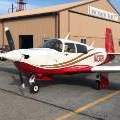Non-Towered Pattern Entry from Upwind Side (Poll)
Pattern Entry at Non-Towered Airports
73 members have voted
-
1. How do you typically join the pattern at non-towered airport from upwind side?
-
Join on the upwind leg7
-
Perform a "teardrop" descending turn after crossing above the downwind leg14
-
Fly above and way past the airport and pattern and turn around some way and enter a normal 4513
-
Overfly midfield and directly join the downwind35
-
Fly an opposite direction (from usual pattern) base to final1
-
Navigate to a point to join a straight in final3
-
-
2. How do you feel about recommended traffic pattern procedures?
-
Traffic patterns are for beginners, experienced pilots can approach other ways1
-
I use the recommended procedures on checkrides but fly as I wish on my own2
-
I stick to the procedures outlined in the FARs, AIM, and AC90-66C47
-
I use the recommended procedures when the pattern is busy but do it another way when it's not20
-
I mainly fly IFR with straight in approaches3
-


Recommended Posts